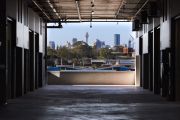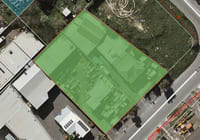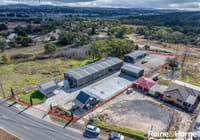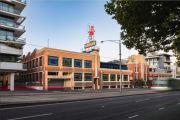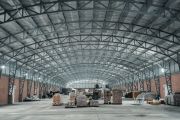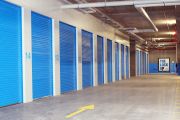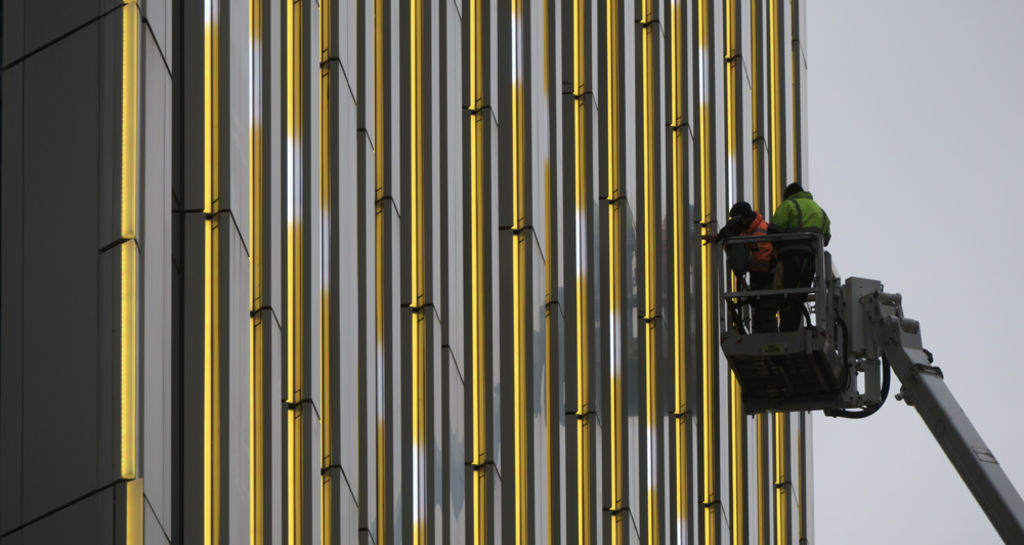
Docklands building lights up with the weather
Art, technology and the built environment have combined to create an illuminating data visualisation project in Melbourne.
Development luminary Lendlease has worked with lighting designer Bruce Ramus on a facade with changing lights for its new Docklands apartment building at 888 Collins Street.
The building uses live data from the Weather Bureau as well as a weather station on the roof to interpret and reflect the conditions in a dynamic display.
“I wanted to be able to reflect something that Melburnians can connect with and something hasn’t been done anywhere else in the world,” Ramus told Fairfax Media.
“I’ve seen building facades lit up across Asia and the Middle East, but I imagine this is the only one that connects to a fluid, chaotic element like the weather.”
 Technicians test the lighting system on the new building at 888 Collins Docklands. Photo: Leigh Henningham
Technicians test the lighting system on the new building at 888 Collins Docklands. Photo: Leigh Henningham
Around 58,000 solar-powered lights on the 15-storey tower, designed by Australian architectural firm Woods Bagot, will change colour and pattern to show the temperature and the conditions in real time.
Every hour, the lights depict a virtual weather forecast for the next day.
This #Docklands tower light installation will interpret ‘how the weather feels’ https://t.co/J7LEG24j60 pic.twitter.com/6PcD6AIY9e
— The Age (@theage) July 13, 2016
In a city known for experiencing four seasons in one day, it’s likely the lights will change often. But Ramus, who has worked with musicians including U2, REM and the late David Bowie, said the content of the light show was “very gentle and not like a flashing light”.
“In practical terms, the light output is diffused and far below the city’s guidelines,” he said.
The project, which can be seen at Collins and Bourke streets, took two years to develop. The lights were switched on for the first time last night at dusk and will project only the moon, drawing on only a small amount of power, between midnight and dawn.
Extra power generated by the solar panels will be directed back into the building.
